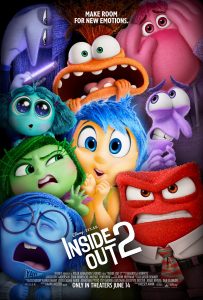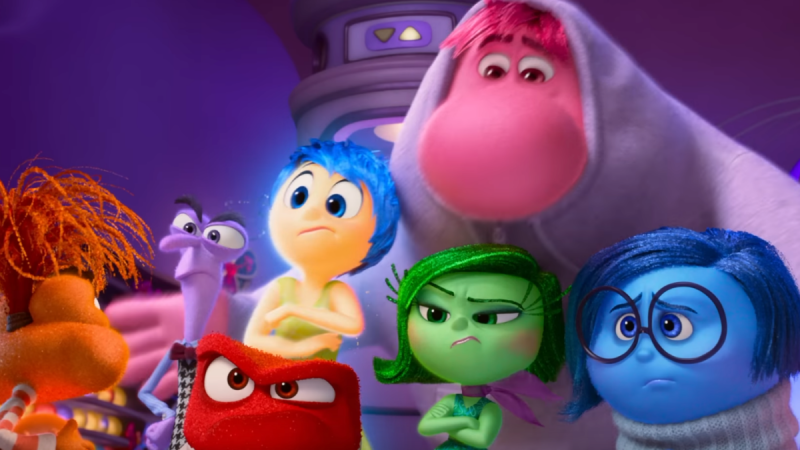
A budding young hockey player is caught off-guard by an onslaught of new emotions in Inside Out 2.
Riley Anderson (Kensington Tallman) has seamlessly adapted to her new life in San Francisco. That’s where we last left the 12-year-old, her family, and Riley’s cadre of emotions in Pixar‘s animated adventure, Inside Out. It’s now one year later, and the focus has inevitably shifted to her first year in high school and her dream of making the school’s varsity hockey team. She’ll have to be at the top of her game to skate freely over the treacherous ice ahead of her.
Everything in Riley’s emotional headquarters seems to be up for the challenge until, out of nowhere, four new emotions show up to dominate her thoughts: Anxiety (Maya Hawke), Envy (Ayo Edebiri), Embarrassment (Paul Walter Hauser), and Ennui (Adèle Exarchopoulos). Yes, this is puberty in all its “just kill me” glory.
The biggest challenge with Pixar’s first foray into this franchise was that it wasn’t very clear who the audience was. This time around, the appeal is crystal clear. Anyone who’s experienced puberty—and that’s most of us—can relate to the chaos and casualties of living through it. It’s fertile ground for Pixar to plant a lasting memory.
Fans of the first film fell in love with the core emotional characters: Joy (Amy Poehler), Sadness (Phyllis Smith), Anger (Lewis Black), Fear (Tony Hale), and Disgust (Liza Lapira). They were the main conduit into the story for most viewers and where our focus is apt to lean in a sequel. However, this installment no sooner puts all nine emotions into the same room before whisking them apart into their own distinct subplots. The result is a schizophrenic jumble with everyone spread way too thin.
Disorder and complication rule the story for the new emotions as they struggle to figure out how to propel Riley towards success. The Anxiety character is so dominant that we barely get to know any of the others. They get a brief line here, an ad-lib there, and little else. Meanwhile, Joy and gang are on a journey to find their way back to HQ in order to regain some semblance of control. Their path leads through an entirely new construct that’s visually stunning but also unnecessarily confusing. Added to the mix is another new concept—Riley’s Sense of Self. This plethora of plot elements leads to a lot of unhelpful technobabble and a second act that feels awkward and sluggish.
This thinning out of the details also takes away some of the more enjoyable foundations of the first film. Anger, with his laugh-a-minute antics, is reduced to a feel-good plush toy. Fear and Disgust—major elements of puberty—are almost afterthoughts. The biggest sign of trouble is that the film is best when focused on the Riley scenes, away from the cacophony of her inner self. The wonder and magic that Pixar can so often summon at will is nowhere to be seen.
The pieces are all here, but the scattershot delivery makes it impossible for this to become another entry into our own long-term memory.



